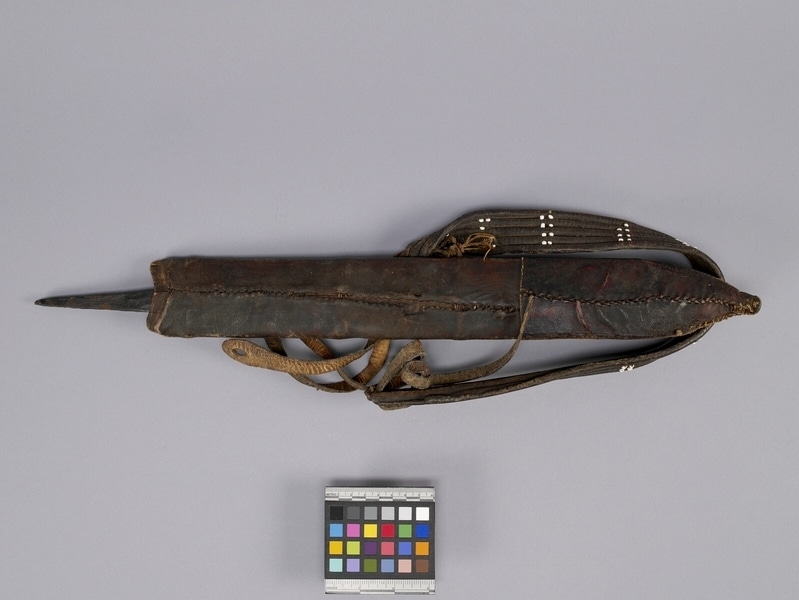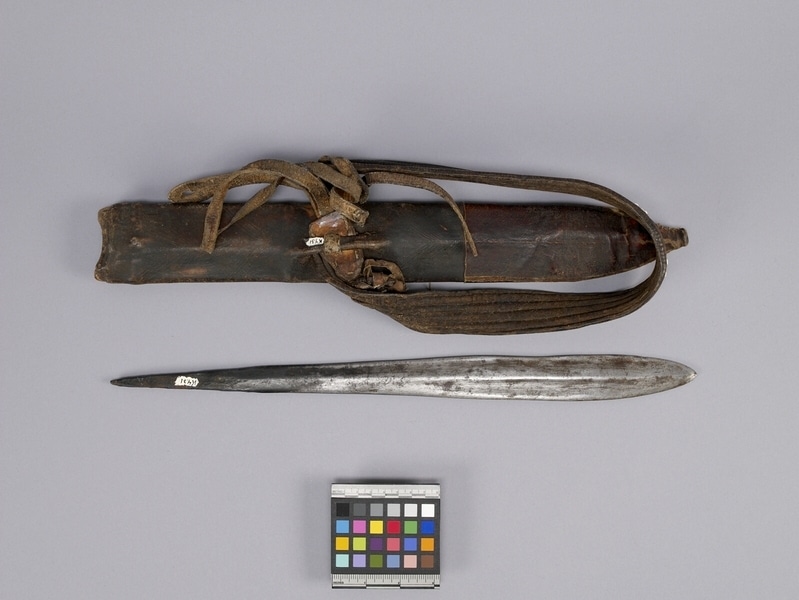Sword Item Number: K4.31 a-b from the MOA: University of British Columbia


Description
Leather sheath (part a) with thick belt and thin strap. Belt band is decorated with white beads. Long plain blade (part b) with central ridge and blackened handle that tapers to a point.
History Of Use
These long, flat blades (called rohyo rwa njora, Kikuyu, or seme or sime, Maasai) are commonly used in Maasai and Kikuyu communities and are carried by men regularly as personal protection while herding cattle. They are also used for utilitarian purposes, including bush-whacking. A weapon like this would be given to a Maasai man when he transitioned from youth (layok) into manhood (moran), usually between the ages of 15-21; making it a symbol of masculine identity. The scabbard (njora, Kikuyu, or olalem, Maasai) of a blade would usually be dyed red and decorated with glass beads. The use of glass beads demonstrates the sword's value as the Maasai did not traditionally produce glass beads; they were introduced to them through trade.
Item History
- Made in Tanzania
- Owned by Basil G. Hamilton and Mary E. Crawford
- Owned by B.C. Provincial Museum before February 1954
- Received from B.C. Provincial Museum (Transferring institution) during February 1954
What
- Name
- Sword
- Identification Number
- K4.31 a-b
- Type of Item
- sword
- Material
- steel metal, leather skin, glass and wood
- Manufacturing Technique
- forged
- Part A
- height 46.0 cm, width 11.0 cm, depth 5.5 cm
- Part B
- height 45.0 cm, width 4.0 cm, depth 0.06 cm
Who
- Culture
- Maasai
- Previous Owner
- Basil G. Hamilton, Mary E. Crawford and B.C. Provincial Museum
- Received from
- B.C. Provincial Museum (Transferring institution)
Where
- Holding Institution
- MOA: University of British Columbia
- Made in
- Tanzania
When
- Ownership Date
- before February 1954
- Acquisition Date
- during February 1954
Other
- Item Classes
- metalwork
- Condition
- fair
- Accession Number
- 1856/0017 a-b